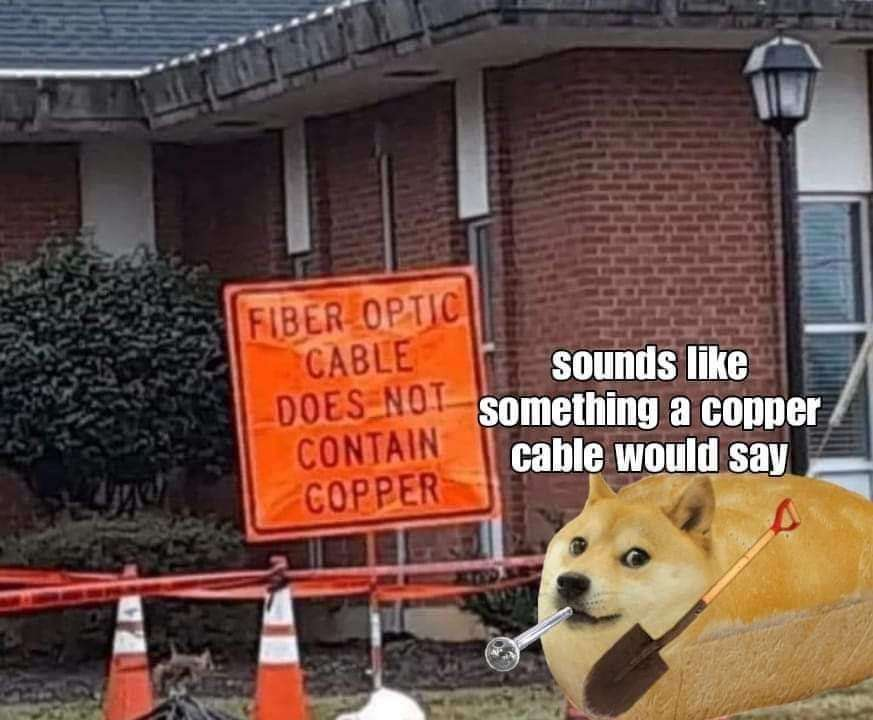this post was submitted on 24 Nov 2023
1194 points (98.9% liked)
Memes
45870 readers
2304 users here now
Rules:
- Be civil and nice.
- Try not to excessively repost, as a rule of thumb, wait at least 2 months to do it if you have to.
founded 5 years ago
MODERATORS
you are viewing a single comment's thread
view the rest of the comments
view the rest of the comments

I was living in a world where I wasn't aware that it's a thing to steal cables. Thanks. But aren't fiber optic more expensive?
Probably, but I don't think you can easily melt it down and sell the raw materials like you can with metals... Just a hunch
Fiber optic cables are very much not recyclable, at least with the current recycling technologies.
i mean its glass, could just melt it down
Sure, but the glass core is only 8–9 µm wide, it's a minuscule amount of glass compared to copper cables so it's not really worth it to melt it down.
Most optical fiber is 125um of glass with 250um coating. The coating and the jacketing that make up the cable (mostly non-recyclable plastic) are the real problem.
I don't know of any fiber that the core is 125 microns. Can you link to one? Neither Single Mode nor Multi Mode fiber is that large.
Sure: https://www.prysmiangroup.com/sites/default/files/business_markets/markets/downloads/datasheets/SMF---Single-Mode-Optical-Fiber-SSMF.pdf
You are right the core of most optical fibers is either 8-9um for singlemode, or 62.5 or 50um for multimode. The cladding, which is also made of glass, surrounds the core and this is almost always 125um. Often there is more than one layer that makes up the cladding glass to help reduce the bend radius before you start to attenuate your signal. You need both the core and the cladding of different refractive indexes to create total internal reflection, which is how fiber optics work over long distances with low loss.
The glass (core + clad) is the only part of the fiber that is really recyclable. Everything else is plastic that is difficult to chemically remove.
There's a lot of really bad literature out there on fiberoptics, so I don't really blame anyone for not knowing this stuff. Here's a pretty good article that sums up how fiberoptics work I pulled off google: https://www.ofsoptics.com/faq-guide-to-fiber-optic-cable/how-do-communications-fiber-optic-cables-work/
It's hyper complex glass
Some are complex, most aren't I'd say.